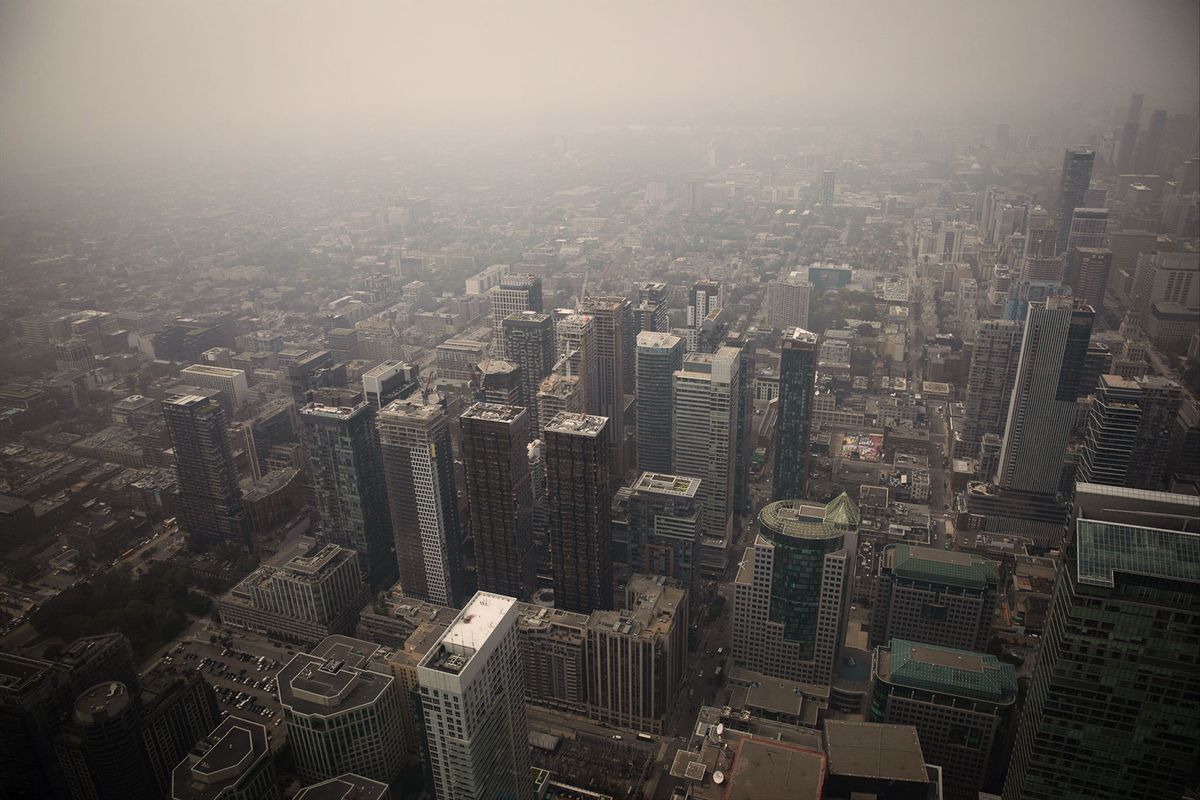“No end in sight” to wildfire smoke suffocating American cities. And yes, climate change is to blame

The Canadian wildfires are continuing a development that is becoming all too common: Climate change is causing extreme abnormal weather, and millions of people are suffering as a result. As many people in Chicago and the Midwest likely noticed, air quality has plummeted in recent days, thanks to flaming forests to the north.
“It is important to recognize that dangerous climate change is already upon us. This is not our grandchildren’s problem. It is our problem.”
The wildfires, which started in late April and worsened considerably in recent weeks, are causing severe air quality problems all over the northern part of North America. (In the southern part of the continent, there is an unprecedented heat wave; Texas is currently the hottest place on Earth, and the heat wave has caused at least a dozen deaths in the American South.) The National Weather Service warned Thursday that air quality would continue to suffer due to the wildfire smoke, which has drifted as far down as the Midwest, the Northeast, the Upper and Middle Mississippi Valleys and even the Carolinas. The worst air quality is in the Great Lakes region and Ohio Valley region, with Chicago ranking as the worst large city in the world when it comes to air quality as of Thursday morning.
Scientists have long predicted that extreme weather events like heat waves and wildfires would become more frequent as humans continue emitting greenhouse gases that trap heat and cause the planet’s temperature to rise. Now a nation accustomed to lockdowns from the COVID pandemic era is being advised to stay inside, so as to avoid hazardous air caused by the wildfire smoke.
The National Weather Service warned that “with no end in sight to the Canadian wildfires and west to northwesterly winds expected to persist from south central Canada into the north central to northeast U.S., poor air quality conditions are likely to continue.”
Experts who spoke with Salon agree that these current wildfires, which are freakish in their duration and intensity, are ultimately the product of unmitigated climate change.
Want more health and science stories in your inbox? Subscribe to Salon’s weekly newsletter The Vulgar Scientist.
“Climate change, as our own work shows, is leading to more of these very persistent ‘stuck’ summer jet stream patterns.”
“It is important to recognize that dangerous climate change is already upon us,” Michael Wehner, a senior scientist in the Computational Research Division at the Lawrence Berkeley National Laboratory, told Salon by email. “This is not our grandchildren’s problem. It is our problem.”
Wehner clarified that this doesn’t mean experts can precisely quantify the role of climate change in these wildfires. “This is not the right question. Climate and weather event attribution science is like epidemiology. It uses statistical causal inference techniques to answer two related questions. First, how has climate change altered the chances of an event of the observed magnitude? Second, how has climate change altered the size of the observed event presuming an inferred probability of an event?”
Wehner compared the question of attributing wildfires to climate change to studies that prove links between smoking and lung cancer.
“Not every smoker gets cancer, not every lung cancer victim smoked [tobacco],” Wehner pointed out. “But the chances of getting lung cancer are increased by smoking. So the chances of wildfires have definitely been increased by global warming. Estimating how much those chances increased would take a targeted study. Wildfires have only recently been the focus of our attention.”
Even so, the considerable amount of data on past weather provides important context to the circumstances that caused these wildfires to happen. As Dr. Michael E. Mann, a professor of Earth and Environmental Science at the University of Pennsylvania, explained in his email to Salon, “climate change, as our own work shows, is leading to more of these very persistent ‘stuck’ summer jet stream patterns, where e.g. a big high pressure system with hot sinking air gets stuck in one particular region of the country.” He observed that this happened in 2021 when there was a Pacific North West heat dome.
“Something very similar is playing out right now over central North America right now,” Mann concluded. “We are in the process of confirming whether or not planetary wave resonance is implicated with this latest event, but it certainly fits the pattern of increased persistent weather extremes that we’re seeing now summer after summer.”
Read more
about wildfires

